Coronavirus: Is it safe for Scotland's schools to reopen?
- Published
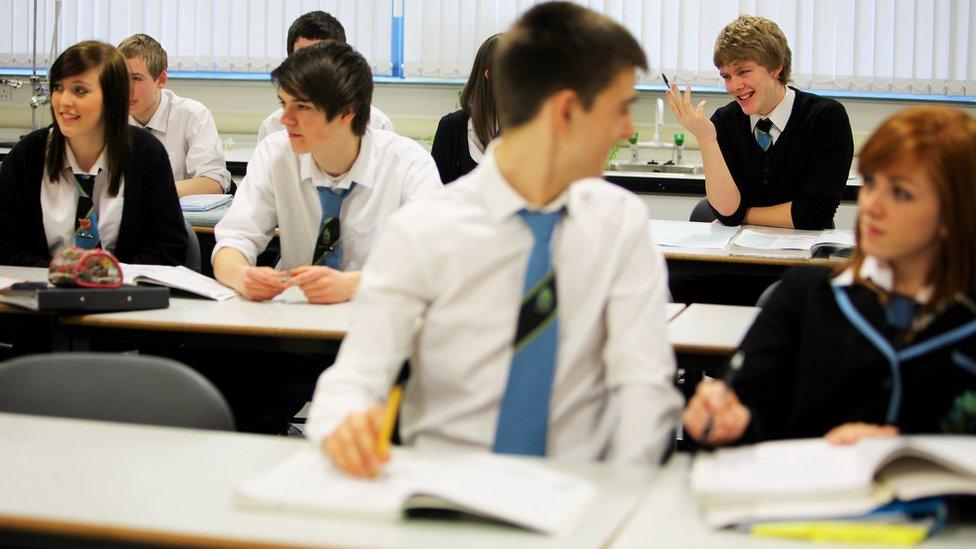
Schools across Scotland have been told to fully reopen to all pupils by 18 August at the latest
Scottish pupils are returning to the classroom this week for the first time since schools closed in March because of the coronavirus pandemic.
Schools in the Borders and Shetland open today, with most others going back from Wednesday - but how safe will pupils and teachers be?
Is it safe for schools to reopen?
The Scottish government insists that it is.
Scotland has had one of the highest coronavirus death rates in Europe, but infection rates are now generally very low, external across the country.
Only about 170 children under the age of 15 have tested positive for Covid-19 in Scotland since the pandemic began - and none have died.
The government points to studies from other parts of the world which suggest that children could be much less likely to be infected than adults, generally develop milder symptoms and may be less likely to spread the virus to others.
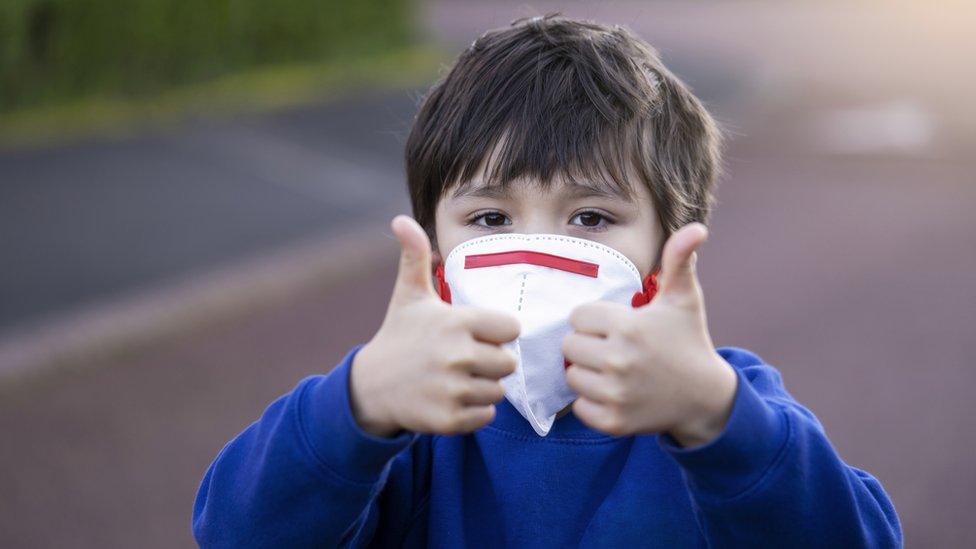
No deaths of any children in Scotland have been linked to coronavirus
Experts from the NIHR Southampton Biomedical Research Centre concluded that "children do not appear to be super-spreaders", external and there was no need for schools anywhere to remain closed.
However, the scientific evidence, external is by no means conclusive - and the Scottish government admits it is less clear for older, secondary school pupils than it is for younger children.
But it says keeping schools closed is bad for children's health and wellbeing, and that "the balance of risk is now strongly in favour of children and young people returning to school full-time".
What safety measures are in place?
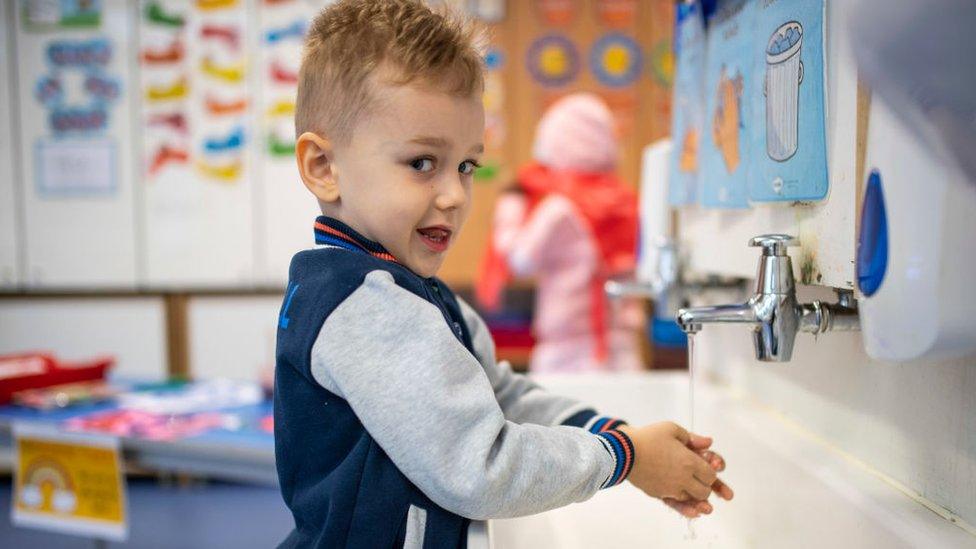
Children won't need to socially distance - but will need to follow hygiene rules
Scotland's schools are going to look and feel very different to how they did before the pandemic.
The government says, external there is no need for primary school children to socially distance - but secondary schools should encourage pupils to distance "where possible".
This means older pupils will be urged not to crowd together, especially indoors, or touch each other.
Adults will need to keep at least 2m apart from each other and from pupils if possible - although it is accepted that this is not realistic for teachers dealing with nursery age children.
No-one will need to wear face coverings, apart from staff who have close personal contact with a pupil for an extended period of time. But anyone who wants to wear a face covering should be allowed to do so.
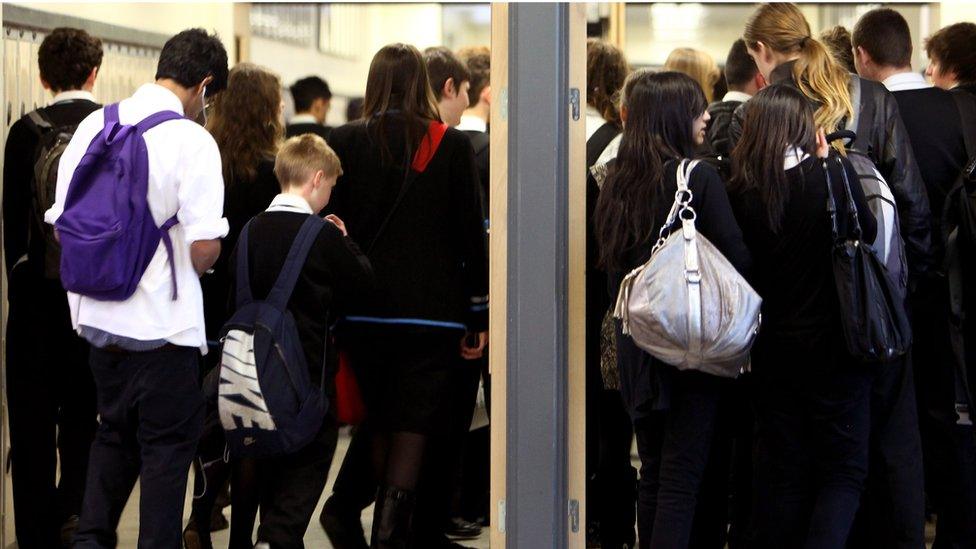
Pupils will be urged not to gather together in large groups
All schools will have to provide adequate hand washing and sanitizing facilities - and ensure they are properly used - and there will be enhanced ventilation and cleaning.
Specific rules vary from school to school, but class sizes could be changed and many are staggering drop-off and pick-up times.
They should try and keep pupils in consistent groups, like a class or year group. Some are making pupils eat lunch in their classroom rather than the canteen, and staggering break times.
Schools are urged to use outdoor spaces as much as possible, but music and singing "should be avoided during the initial return to school".
How safe do teachers feel?
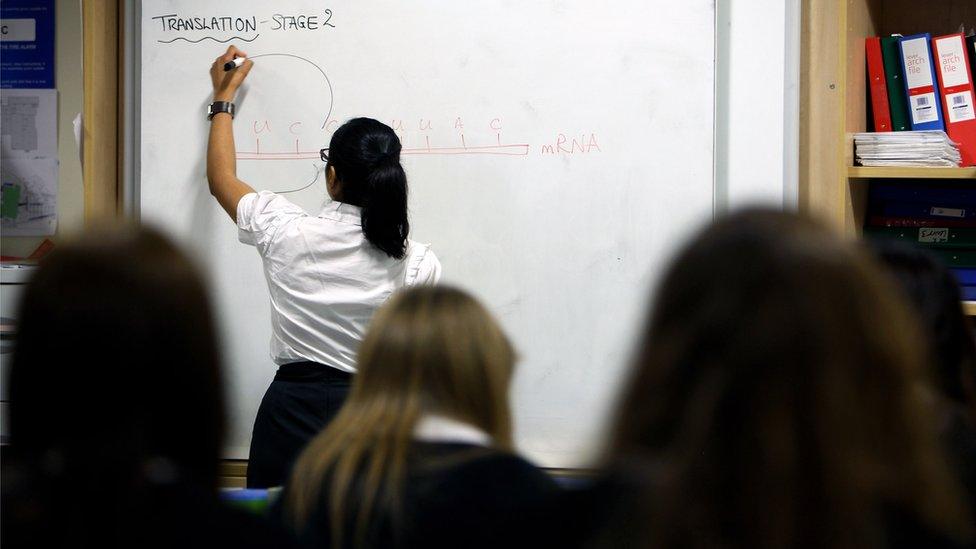
Scotland's biggest teaching union, the EIS, says many of its members still have serious concerns.
It carried out a survey, external of about 25,000 teachers last week. While the majority (64%) supported the decision to re-open schools, only a fifth were confident schools were currently safe.
There have been calls for the routine testing of staff, even if they have no symptoms of the virus.
The EIS said there was "strong support" for the use of face coverings among its members. Some teachers have questioned why they will need to wear one on the bus to work, but not while surrounded by pupils.
What happens if someone tests positive?

The close contacts of anyone who tests positive will be traced
Anyone who thinks they might have the virus should stay at home, and pupils or staff who show possible symptoms at school will be told to follow the national rules on testing and self-isolation.
If anyone connected to the school tests positive, the local health protection team will then assess what further action is needed.
The school could potentially shut temporarily, although Education Secretary John Swinney has said that this will "not necessarily" be the case.
Any significant rise in the number cases either locally or nationally could lead to schools moving to a part-time model or even closing completely for a time.
What if I don't want to send my child to school?
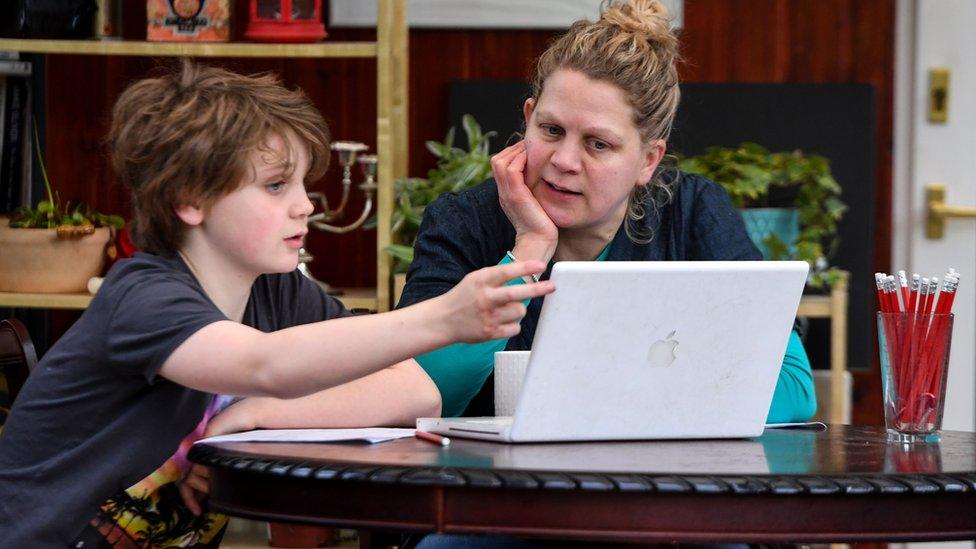
Parents have been home schooling since March - and not all are ready for their children to return to the classroom
Many parents struggled with home learning and are looking forward to the return to school. However, the government accepts this is not the case for everyone and that some parents might want to keep their children at home.
The government says schools and local authorities should offer reassurance about safety and encourage parents to allow their children to return to school.
Rules on compulsory attendance "should only be used as a last resort".
All children and staff who have been shielding are expected to return to school, unless they have been given medical advice not to do so.